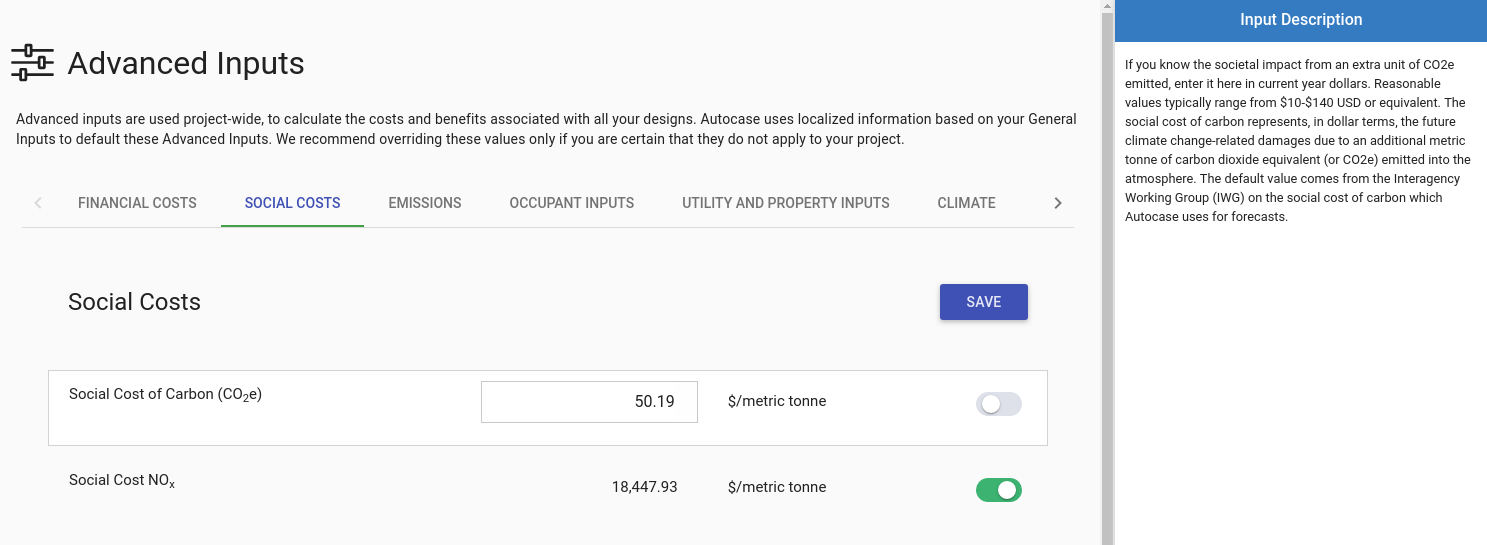Autocase for Buildings is not a black box. We do our best to make Triple Bottom Line Cost Benefit Analysis (TBL-CBA) of your building designs as easy as possible. So we put in defaults wherever we can so you don’t have to. We use government, regulatory, and industry standards for our data. You want the latest and most local data in your analysis and that is what we provide. But we also allow you to override any of our data if you have better information.
The video below shows how to access the advanced inputs in Autocase and how to, for example, change the cost of carbon (don’t worry about changing things because you can always change back to the Autocase defaults using the green toggle to the right of the input). You will notice that as you click on an advanced input the right hand panel gives you guidance on the input.
You can even change the climate change scenario to apply (Choose the Climate tab and pick the Representative Concentration Pathway or RCP you want. RCPs are alternative greenhouse gas concentration trajectories adopted by the Intergovernmental Panel on Climate Change. We currently have RCP 4.5 where emissions peak around 2040, then decline, and RCP 8.5 where emissions continue to rise throughout the 21st century.)
(Click on the maximize screen button on the bottom right of the video to enlarge)





